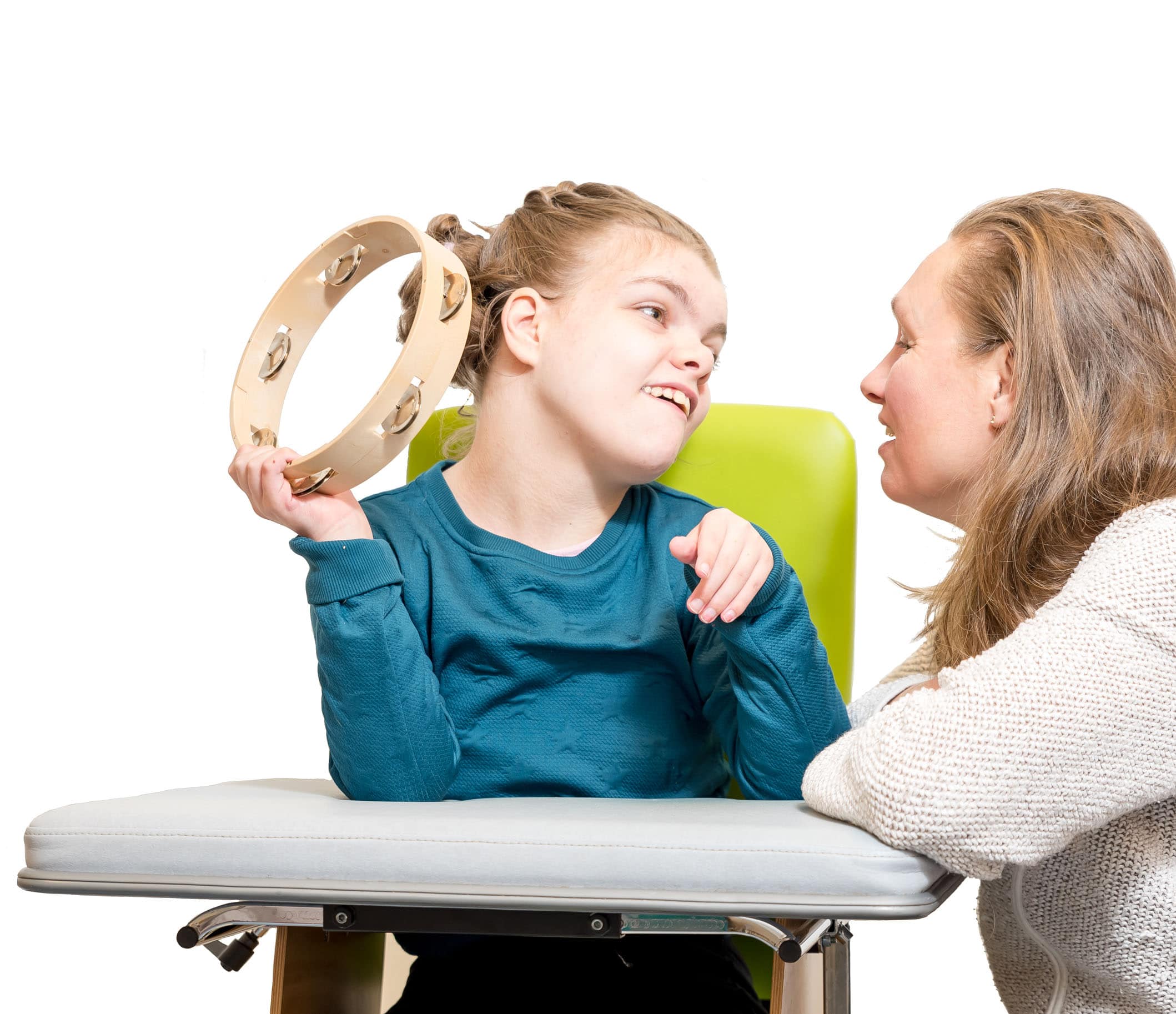The benefits of playing a musical instrument are well documented. Research has found that learning to play an instrument improves academic performance, builds social skills, reduces stress and increases self-esteem.
Yet, for individuals with physical and intellectual disabilities, whether congenital or acquired, learning to play a musical instrument can be challenging. Thankfully, advances in technology have made it possible for even the most severely impaired to make music. Here are some options for your budding musician.
1. Switch activated instruments
Adaptive musical instruments available through Enabling Devices include our switch-adapted Drum, Drumbourine, Bongo Drums, Lighted Musical Tambourine, Little Rock Star Guitar and Band Jam. Any of them will have you or your child rocking out in a flash!
2. EyeHarp
Created by musician and computer scientist Zacharias Vamvakousis in 2010, EyeHarp is the first musical instrument that can be played using only eye gaze or head movements. According to the company’s website, the eye harp is appropriate for individuals with “cerebral palsy, amyotrophic lateral sclerosis, muscular dystrophy, amputation of an upper limb or spinal cord injury, as well as to those with intellectual disabilities.” The digital instrument “offers the same expressive qualities as any traditional instrument.” Check it out at eyeharp.org.
3. MiMu gloves
Musician Imogen Heap developed these groundbreaking gloves that enable wearers musicians to compose and play music by gesturing. According to soundbrenner.com, MiMu gloves “track the position, direction, velocity, and posture of the hand. They can be programmed to trigger and perform custom musical functions.” Learn more here.
4. Subpac
Like MiMu gloves, Subpac is a wearable device. The Subpac resembles a vest and works by transferring “deep bass frequencies onto the body to create an immersive experience.” This device is most useful for musicians with hearing loss. More information is available at shop.subpac.com.
5. Clarion
Created by Open Up Music in the UK, the clarion is an award-winning accessible instrument that can be played using any part of the body. According to Open Orchestras, “Clarion software works seamlessly with assistive technology hardware that young disabled people use in their everyday lives, such as EyeGaze or Infrared head trackers.” Available on iPad and PC, the clarion is customizable so the musician can change setting to meet their individual needs. To learn more, visit openorchestras.org.
6. Jamboxx
The Jamboxx resembles a harmonica and is controlled entirely by the musician’s breath. Use the breath to vary expression, bend notes and coolest of all, change instruments with the click of a button. Find more information at https://www.jamboxx.com/.
Photo courtesy of JamBoxx






 And, when interviewed by the
And, when interviewed by the 